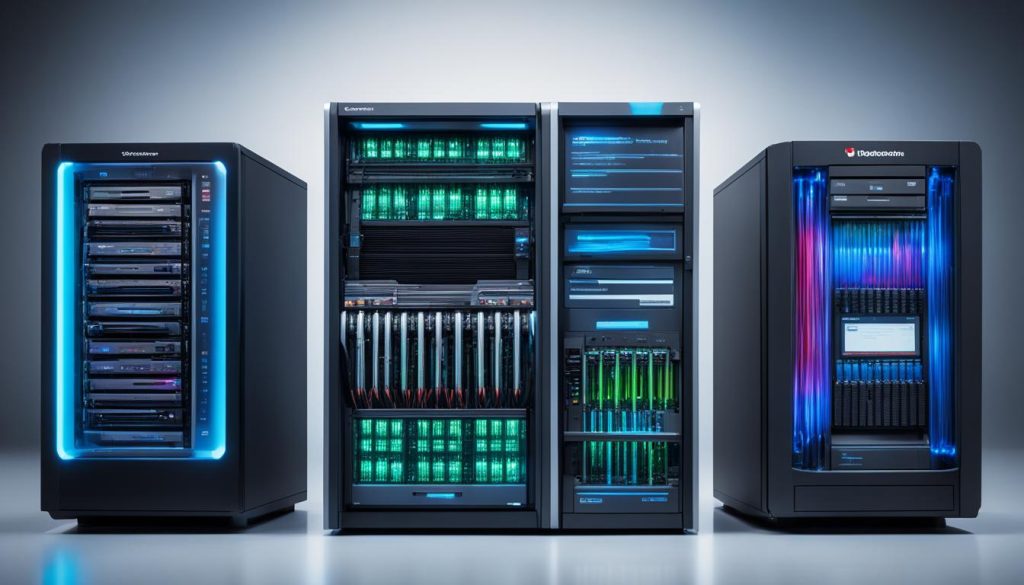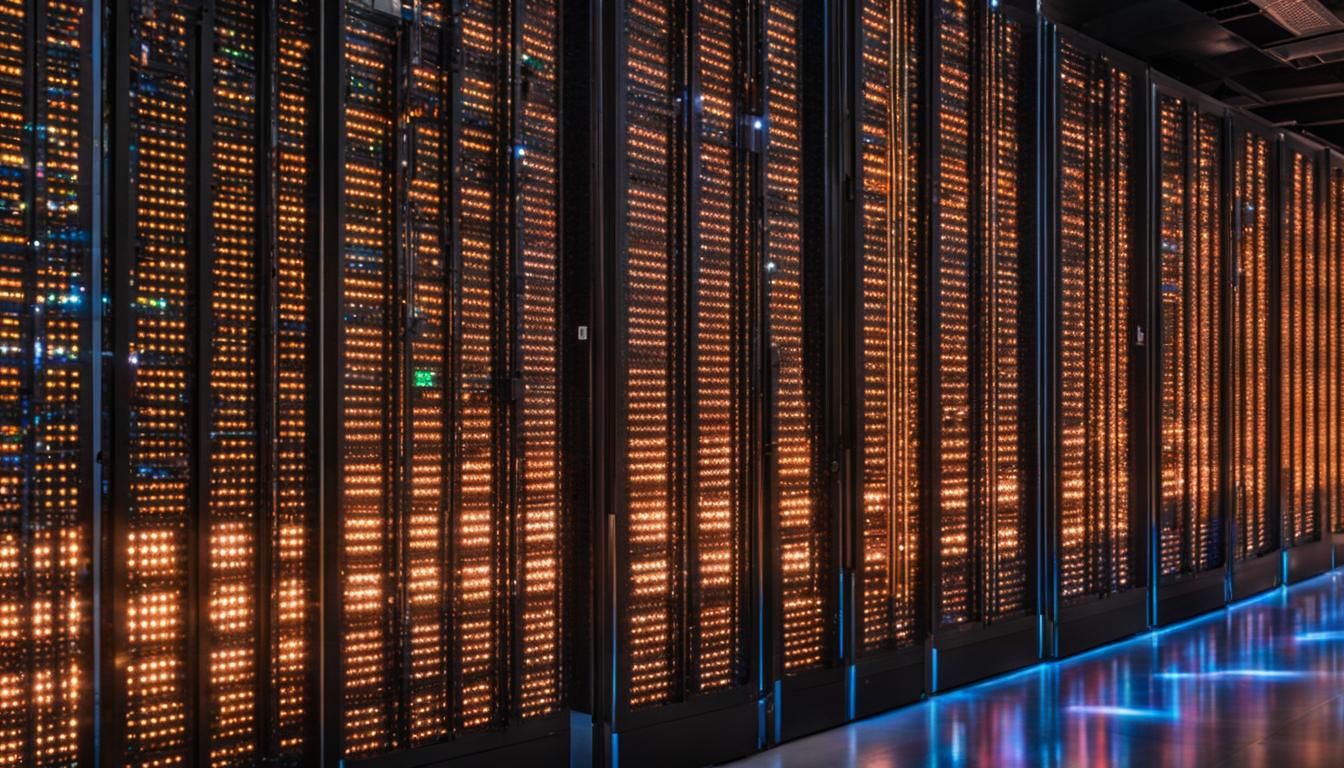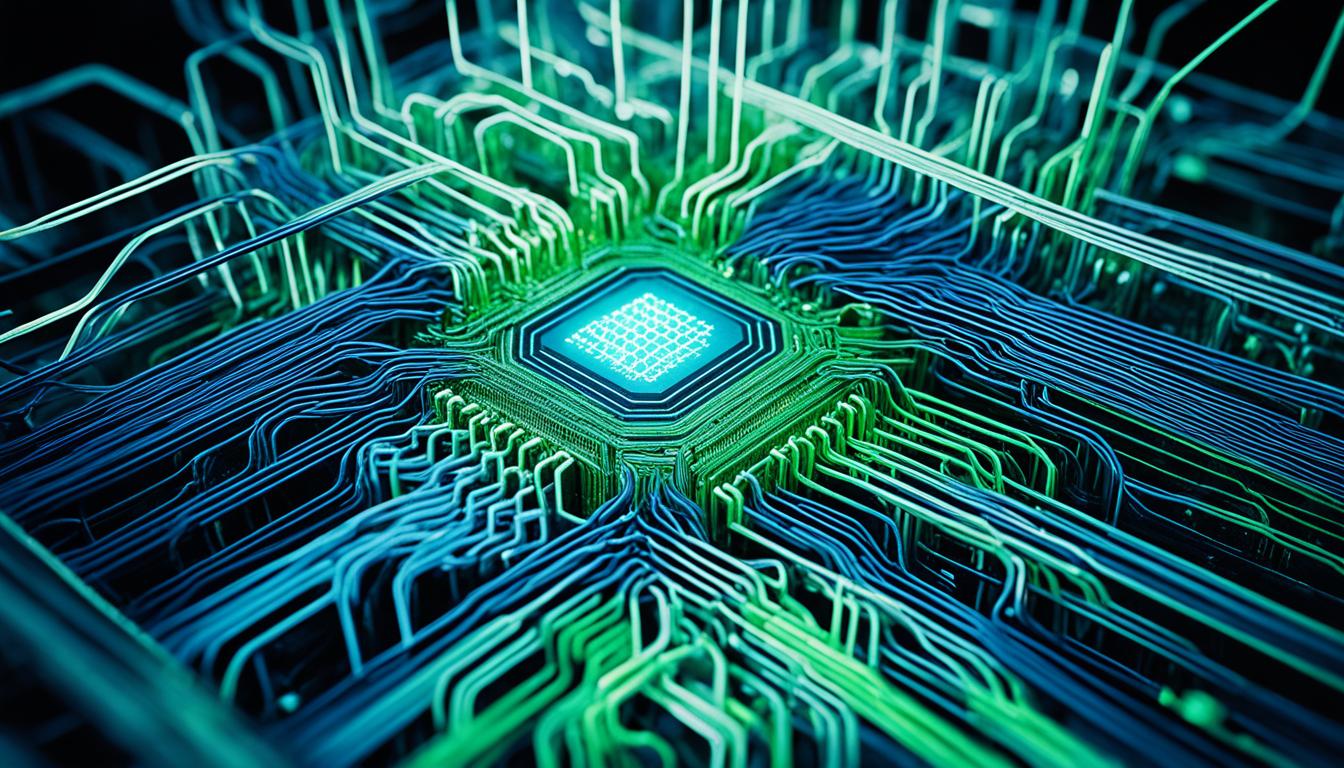Mainframes working with you: Online transaction processing
Did you know that 90% of the largest enterprise mainframe users see mainframes as a platform for new growth and long-term applications? Mainframes have been the backbone of corporate data centers for over half a century and continue to play a vital role in various industries.
Mainframes are known for their ability to handle high-speed, real-time transaction processing, making them indispensable in sectors like banking. With their capacity to process large volumes of transactions and multiple terabytes of data, mainframes are essential for information-intensive areas such as government, healthcare, insurance, utilities, and education.
Not only are mainframes reliable and secure, but they have also evolved to integrate with modern technologies and programming languages like Python, Java, and JavaScript. This evolution has made them highly capable in areas like machine learning, big data analytics, and blockchain.
With their continued relevance and constant innovation, the global mainframe market is projected to reach $2.90 billion by 2025.
Key Takeaways:
- Mainframes are still a platform for new growth and long-term applications according to 90% of the largest enterprise mainframe users.
- Mainframes excel in high-speed transaction processing and can handle large volumes of transactions effectively.
- Mainframes are crucial in industries like banking, government, healthcare, insurance, utilities, and education due to their ability to handle multiple terabytes of data.
- Mainframes have evolved to support modern programming languages and technologies, making them highly capable in areas like machine learning, big data analytics, and blockchain.
- The global mainframe market is expected to reach $2.90 billion by 2025.
The Power of Mainframes in High-Speed Transaction Processing
Mainframes have proven to be unmatched in high-speed transaction processing, making them an integral tool in industries such as banking. With their exceptional capabilities, mainframes excel in handling large volumes of transactions, ensuring seamless real-time processing for crucial customer interactions like credit card and ATM transactions.
One of the key advantages of mainframes is their cost-effectiveness combined with their ability to process a high number of transactions efficiently. Fortune 100 enterprises continue to rely on mainframes for their most critical business functions, recognizing that contemporary alternatives cannot match their capabilities.
<!–
Comparative Analysis of Mainframe Transaction Processing
–><!–
| Mainframe | Alternative Solutions |
|---|---|
| Unmatched speed and efficiency | Limited processing power |
| Ability to handle large volumes of transactions | Capacity constraints |
| Cost-effective | Higher cost per transaction |
–>
Mainframes surpass contemporary alternatives with their high-speed transaction processing capabilities, ensuring the seamless execution of a significant volume of transactions. For businesses seeking superior performance, reliability, and cost-effectiveness, mainframes remain the go-to solution.
Mainframes: Handling Data Intensive Tasks with Ease
Mainframes are highly adept at handling data-intensive tasks, making them invaluable in industries that require processing and storage of large volumes of data securely. Sectors such as government, healthcare, insurance, utilities, and education heavily rely on mainframes for their robust data handling capabilities.
With the ability to handle multiple terabytes of data seamlessly, mainframes ensure the efficient processing of critical business functions in information-intensive areas. This capability not only enables organizations to manage immense data requirements effectively but also ensures the secure processing of sensitive information.
Mainframes have become trusted partners in safeguarding data integrity and privacy, making them the platform of choice for information-intensive industries.
To further illustrate mainframes’ data handling capabilities, consider the following table:
| Industry | Volume of Data Handled | Mainframe Benefits |
|---|---|---|
| Government | Multiple terabytes of citizen records, administrative data, and public resources. | Efficient processing, data security, and reliable performance. |
| Healthcare | Massive patient records, medical imaging, genomic data, and research information. | Secure storage, rapid access, and compliance with data privacy laws. |
| Insurance | Policyholder information, claims data, risk assessments, and actuarial calculations. | Accurate processing, data protection, and support for complex calculations. |
| Utilities | Maintenance records, energy consumption data, infrastructure management, and billing information. | Reliable data processing, scalability, and real-time analytics. |
| Education | Student records, academic data, research findings, and learning management systems. | Secure data storage, streamlined workflows, and robust performance. |
As the table demonstrates, mainframes excel in handling the extensive data requirements of various industries, enabling reliable and secure data processing in information-intensive areas.

Mainframes: Evolving with Modern Technologies
Mainframes have adapted and evolved to keep pace with the ever-changing IT landscape. In the past, they were restricted to proprietary operating systems and programming languages like COBOL. However, modern mainframes have embraced integration with popular technologies that are widely used today.
One significant development is the integration of mainframes with Linux, opening up new possibilities and expanding the capabilities of these powerful systems. Mainframes can now seamlessly interact with Linux-based servers, enabling organizations to leverage the benefits of both platforms.
Moreover, mainframes have embraced modern programming languages to enhance their versatility. Languages such as Python, Java, JavaScript, and C++ can now be utilized on mainframe systems, empowering developers to leverage their existing skills and tap into the immense power of mainframe technology.
This multilingual capability is a game-changer, as it allows mainframes to leverage sophisticated tools developed for the x86 server world. Developers can now harness the power of proven tools while taking advantage of the scalability, performance, and security features that mainframes offer. This integration with new technologies ensures that mainframes remain relevant and adaptable in today’s fast-paced digital landscape.
Furthermore, mainframes have not only embraced programming languages but have also tapped into AI ecosystems. By incorporating open-source languages and tools such as Scala, Python, TensorFlow, and Apache SparkML, mainframes can harness the power of artificial intelligence and machine learning. This integration enables organizations to leverage advanced analytics and data processing capabilities within their mainframe environments.
To facilitate the integration of mainframe data within modern IT environments, vendors like Precisely offer a range of tools. These tools enable seamless integration of valuable mainframe data with big data platforms and analytics platforms, eliminating the need to offload data to other environments. This integration streamlines data workflows and allows organizations to harness the full potential of their mainframe data while ensuring compatibility with modern technologies and systems.
Overall, the continuous evolution and integration of mainframes with modern technologies have cemented their position as a vital component of the IT infrastructure. Mainframes now have the ability to coexist with other systems, integrate with emerging technologies, and provide organizations with the necessary firepower to tackle complex IT challenges.

Mainframes: A Secure and Reliable Platform
When it comes to critical business operations, mainframes offer superior security advantages that make them an ideal choice. With their immense processing power, mainframes can provide 100% end-to-end encryption while maintaining optimal performance. This level of security is especially crucial in industries like banking, where transaction integrity is paramount.
Mainframes have the ability to encrypt data 18 times faster than x86 platforms, at only 5% of the cost. This means that businesses can enjoy the benefits of enhanced security without incurring exorbitant expenses. The reliability and efficiency of mainframes make them a trusted platform for processing secure and reliable transactions, safeguarding sensitive data throughout the entire transaction lifecycle.
One notable application of mainframes’ security features is in the blockchain model, which relies on the immutability of data blocks. By leveraging the security advantages of mainframes, businesses can ensure the integrity and confidentiality of blockchain transactions. This is especially significant as blockchain technology continues to revolutionize various industries, including finance, supply chain management, and healthcare.
By harnessing the power of mainframes’ security advantages, businesses can benefit from an unparalleled level of protection, instilling trust among customers and stakeholders. With 100% end-to-end encryption and robust transaction integrity, mainframes provide a secure and reliable platform for critical business operations.
| Security Advantages of Mainframes | Benefits |
|---|---|
| 100% End-to-End Encryption | Ensures data integrity and confidentiality throughout the entire transaction process |
| Fast Encryption Speed | Encrypts data 18 times faster than x86 platforms, at a fraction of the cost |
| Reliable Transaction Processing | Ensures secure and reliable transactions, protecting sensitive data |
| Compatibility with Blockchain | Facilitates secure blockchain transactions by leveraging the immutability of data blocks |
Mainframes: Integrating with Modern IT Environments
The mainframe still plays a crucial role in the modern IT environment, despite the growing popularity of cloud migration and emerging technologies. While some might consider mainframes as legacy systems, they are an indispensable powerhouse that cannot be easily replaced. Mainframes continue to handle critical workloads, especially Systems of Record (SoR) and bulk data processing, making them essential in industries such as banking, insurance, airline, and retail, where they handle approximately 95% of transactions.
Mainframes have the ability to seamlessly coexist with other servers and can be integrated into hybrid cloud environments and microservices architecture. This coexistence strategy enables organizations to leverage the power and stability of mainframes while embracing the flexibility and scalability of modern technologies. With support for both z/OS and Linux platforms, mainframes offer the best of both worlds, reducing costs and ensuring stability and security.
Seamless Integration with Hybrid Cloud
Integrating mainframes with hybrid cloud environments enables organizations to optimize their IT infrastructure and leverage the benefits of both on-premises and cloud-based computing. By combining the reliability and security of mainframes with the scalability and agility of the cloud, businesses can ensure smooth operations and expand their capabilities as needed. This hybrid approach allows for efficient resource allocation, cost reduction, and the ability to quickly adapt to changing business needs.
Microservices Architecture for Enhanced Flexibility
Mainframes can be seamlessly integrated into microservices architecture, providing organizations with the ability to build and deploy complex applications in a modular and scalable manner. By breaking down monolithic applications into smaller, independent services, businesses can achieve greater flexibility, agility, and resilience. Mainframes can serve as the backbone for critical microservices, ensuring reliable and efficient transaction processing while supporting the development and deployment of modern, customer-centric applications.
Empowering z/OS and Linux Integration
Mainframes offer the unique advantage of supporting both z/OS and Linux platforms, allowing organizations to leverage the strengths of each operating system and integrate them seamlessly. z/OS provides the robustness and security that mainframes are known for, while Linux offers the flexibility, openness, and extensive ecosystem of modern open-source technologies. This integration enables businesses to develop and run a wide range of applications and services, leveraging the power of mainframes alongside modern software stacks.
Mainframe Integration with Event Mesh: Real-Time Integration Made Easy
Real-time integration with mainframes is crucial in the modern IT landscape, especially as peripheral systems transition away from mainframe technology. To facilitate this integration, an event mesh is employed to connect mainframe Systems of Record (SoR), Systems of Engagement (SoE), and Systems of Intelligence (SoI), resulting in a scalable and distributed architecture.
Mainframes serve as the backbone for critical workloads and transaction processing, while Systems of Engagement interact with customers in real-time. Additionally, Systems of Intelligence leverage artificial intelligence and machine learning to enhance operations. By implementing an event mesh, seamless communication and event distribution are enabled among decoupled applications, cloud services, and devices, facilitating real-time integration between mainframes and other systems in the modern IT environment.
This real-time integration between mainframes and peripheral systems is driven by the need for efficient and effective data sharing. As peripheral systems move away from mainframe technology, ensuring the interaction between Systems of Record (SoR) and Systems of Engagement (SoE) becomes increasingly important. An event mesh enables the smooth flow of data and events between these systems, promoting real-time collaboration and enhancing overall operational efficiency.
FAQ
How do mainframes excel in high-speed transaction processing?
What makes mainframes ideal for handling data-intensive tasks?
How have mainframes evolved with modern technologies?
What security advantages do mainframes offer?
Can mainframes integrate with modern IT environments?
How can mainframes achieve real-time integration with other systems?
- Shop for Server & Workstation Systems & more - February 25, 2025
- IP Geolocation API and IP Location Lookup Tools - February 24, 2025
- What is GoDaddy? Everything You Need to Know in 2024 - February 23, 2025





















Post Comment
You must be logged in to post a comment.